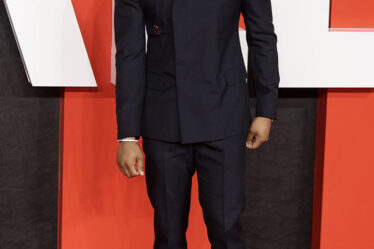is getting a lot of play of late. At the recent CFDA/Fashion Fund awards in November,
spoke at length about the ups and downs (and downs) of starting a new fashion business. Many young designers rush into setting up a business, attracted by the perceived glamour and fun that is associated with the fashion industry. There are wonderful fairy tale stories of young talented designers graduating from St Martins or Parsons and then going off to achieve fame and fortune. The stories we hear less of are those that describe all of the failed companies and dashed hopes that are the cruel reality of this industry. I am glad that Marc shared his stories with some of the upcoming stars of American fashion who were in the audience, including Doo.Ri Chung,
and Peter Som.
One of the most common questions I am asked by designers who have just come out of fashion school (at both the bachelor’s and master’s level) is: “Should I start my own business or should I go work for a big fashion house?”. The truth is, the right answer depends on you and your aims. In our first article on the Business of Fashion Basics, we will pose the questions that you need to ask yourself – so you can make the right decision.
:quality(70)/images.businessoffashion.com/site/uploads/2007/02/House-Ad-2-Copy-48-1024x482.jpg?auto=format%2Ccompress&crop=top&fit=crop&h=482&w=1024)
 The first thing to think about is “Do I really want to run a business?”
The first thing to think about is “Do I really want to run a business?”Beautiful people, fun parties, flights of creative fancy – what more is there to want from a career? Here’s a reality check: it’s not as glamorous as it sounds. Running a fashion business means that packing boxes at 2 am, steaming clothes over and over again, and pouring through receipts with an accountant will become part of your routine. You will likely spend less than 10% of your time designing, while the rest of the time you will be managing production, sending clothes to magazines, dealing with suppliers who want their money (now!), begging Anna Wintour‘s assistants to grant you a meeting, managing your employees while hoping they don’t fall ill, and trying to eat and bathe in between. On top of all that, you have to worry about making enough money to declare some kind of dividend from the business for all your hard work. You will eat, live and breathe your business 24/7. If that doesn’t turn you off, then keep reading.
Starting any kind business requires tenacity, endurance and dedication. Setting up a fashion business is all the more challenging because this is a hyper competitive industry (who doesn’t want to be a fashion designer these days?) and a very complex one as well, even at the smallest of scales. What other kinds of start-up businesses so quickly find themselves with customers and suppliers scattered around the world, requiring so much coordination and organization? Managing to get all of your raw materials (fabrics, trims, haberdashery, etc) all to your manufacturer at the same time to start your production and then sending it all out to stores in different corners of the world (each with their own customs procedures) in only 2 months can be a nightmare, even for those with great forward planning and troubleshooting skills.
All of this is to say that one of the key drivers of success will be your entrepreneurial skills and your commitment to running a business. In order to be successful, you should think of yourself as a CEO first, fashion designer second. A CEO is a manager of people, finances and processes. Therefore, you will have a great deal of responsibility and important business decisions will face you each and every day. The buck stops at you and the business should always be at the forefront of your mind, not just an afterthought.
For some people this is an extremely exciting and energizing situation to be in. For others, it is their worst nightmare. What kind of person are you?
Next, you should ask: “Do I already have or can I find the necessary skills, contacts and funding to create a successful fashion company?”
Clearly, you won’t be able to do absolutely everything yourself. This is where you need to find other people who believe in you to join your team or provide support in some other way. Doing a self-assessment of your skills and abilities will tell you what gaps you will need to fill in order to make your business work.
You may assume that having completed a design degree, there are no skill gaps there. However, the design process in a business can often feel very different to that of the design process in school, where you don’t have to worry about things other than the product. Running fashion business means developing and following an organized creative process that works for you – and that other people can work to as well. One of the great things about designers who have previously worked in a large fashion house is that they have seen how other people organize themselves and can take lessons from there as they start. Having a clear design methodology is crucial to getting the best out of your abilities. If you don’t have this in place now, perhaps you may want to spend some time learning from someone else first.
Apart from mastering the design process, something that some of the smartest designers do next is to find a business partner they can trust, who brings different skills and connections to the table. Often it is a spouse (Patrizio Bertelli is married to Miuccia Prada), sibling (Christopher Kane‘s sister Tammy runs the business) or a friend (Marc Jacobs has long time business partner Robert Duffy) who might take on this role. In this way, not only do you have someone to lean on in times of difficulty, you also have a division of roles, which allows you to focus on more on the creative aspects of the business.
You will also need to find people in the Industry who agree to support you and work with you. You’ll need a PR who will (at least initially) give you his services for almost nothing and a factory that will make your clothes in small quantities. You will also need accountants, lawyers, stylists, photographers, graphics designers, production managers and interns – hopefully all at discounted prices. You therefore need to ask yourself if you already have a set of contacts which you can leverage to make your business work. If not, you need to get out there and meet people so you can start your business on the right foot, with the right team behind you.
Finally, for most designers who haven’t come into an unexpected windfall inheritance in the millions, starting a business is also a question of finding money. There are many sources of funding, but each source will take time and effort before it bears its fruit. Family and friends who believe in you are obviously one place to start, but you will also need to deal with bank managers about loans, and think about taking on investors as well. Having a network of people who may be able to introduce you to potential sources of funding is imperative to setting up your business. You can have a brilliant business concept, a fantastic team, and all the energy in the world, but without funding in place from the start, it will be difficult to get up and running. You should also do research on grants, sponsorship and awards that many organizations make available to nurture new design talent.
Lastly, you should ask yourself: “Do I have something unique to offer the market?”
If there is one crucial thing I recommend that you do before rushing off to start a business, it is to carefully craft your business concept. What is it about your business that will be unique? Why will people choose to buy your product over someone else’s? Is it the design, the price, the value or the dream that they are buying into?
You will need to think carefully about who you are designing for. It is cliché by now, but I almost always ask designers when I first meet them: “Who are you designing for? And why?”. Most of the time, this simple question is met with groans or blank stares or platitudes like “I design for me and my friends” or “A very glamorous woman with lots of money”. This is not enough. You need to get into the mind of your customer and understand what motivates them. Where do they spend their time and for what occasions will you dress them? What makes them buy a garment? Understand their psychology, emotional needs and relationship with clothing. Visualize all the aspects of their lives and assess how your business can blend into making them even better.
It’s worth pointing out now that not all fashion businesses have to operate at the high end of luxury, although it seems that that is where every designer wants to be. Remember, your business concept needs to offer a clear proposition of value to your customer, and that value could be world-class design at more reasonable prices. Look at Zara or H&M or Coach or American Apparel and how they have taken clear business ideas that allow them to deliver great fashion to the masses. While it may seem ideal to be a “luxury” brand, also remember that some of the most influential fashion businesses are on the high street and in your neighbourhood mall, because they dress thousands of people around the world.
Next time: Writing a Business Plan
Assuming I haven’t completely scared you from starting your business, our next article will go through the process of writing a business plan and why it is so valuable. In short, it will help you to raise funding, to clarify your vision, and to set a roadmap for how to get there.
—
This is the first in a series of articles on the Business of Fashion: Basics
• Basics 1 – Setting up your own fashion business – what do I need to know first? • Basics 2 – What is a business plan for and how do I go about writing it? • Basics 3 – How do I find the right investors and partners? • Basics 4 – How do I decide where to allocate my capital? • Basics 5 – Design and development • Basics 6 – Sales • Basics 7 – Production • Basics 8 – Marketing • Basics 9 – E-Commerce




